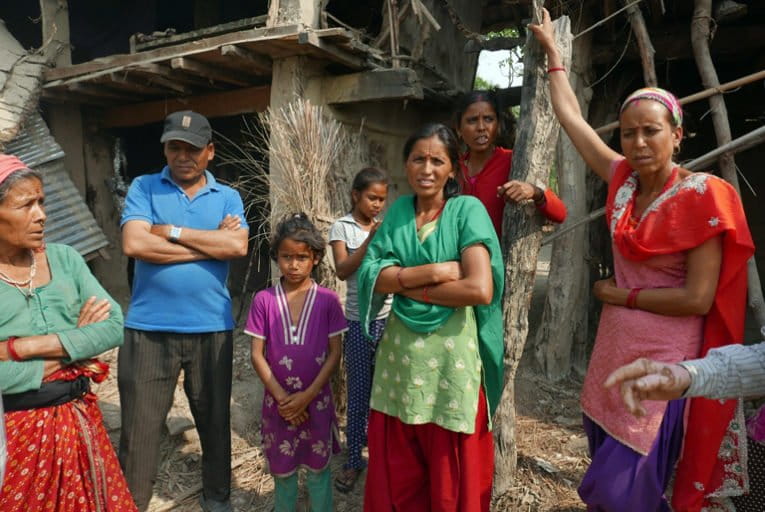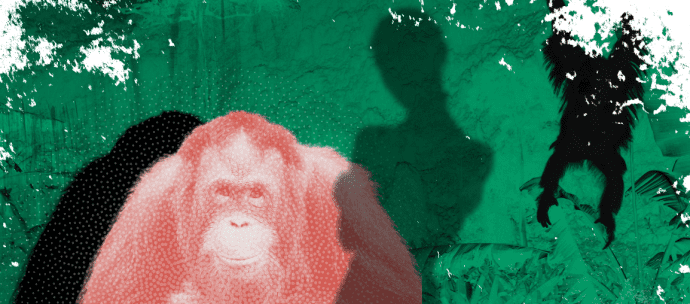Med mennesker og vilde dyr, der skal leve stadig tættere sammen, opstår der ofte konflikter. Tit er løsningen desværre at skyde dyret, men i Nepal vil man forsøge sig med en alternativ tilgang. Et elektrisk hegn er blevet udviklet og fungerer det efter hensigten, vil hegnet stoppe elefanterne på deres "tour de afgrøder", men tillade øvrigt vildtliv, mennesker og kvæg at passere. Hegnene vil kun komme til at fungere, hvis de lokale civilsamfund støtter og vedligeholder dem og at få den støtte er ikke en nem opgave. Medfinansiering vil være et af virkemidlerne til at få den nødvendige følelse af ejerskab fra lokalsamfundene.
“We are not angry with the elephant and know that we need to protect it, but we also need to protect ourselves”.
This is a brave statement by Kaushala Budha, a Nepali farmer in the Patabhar hamlet, whose house had been nearly destroyed by a raiding elephant the previous night. I had expected more anger and a call for revenge, but no such thing. “If the government would help us, we would pack our bags and leave”, she says. Not too surprising because last night’s raid on her house was the 6th time in a year.

Human-elephant encounters are costly to the community. A recent study showed that the total yearly elephant damage in the 5,000 ha project area is about US$ 35,000 – 50,000 in crop losses and damage to houses.
But the losses are not just financial; they are also emotional. The Budha family that I talked to had a very scary night. One adult male elephant walked through their gate in the middle of the night when everyone was fast asleep. It pulled down one wall in search of food. Then it moved to a second house, and ripped open the wall right next to where the family was sleeping with their children.
Everyone was in a panic, they tried to light fires and fireworks to chase off the elephant, but the animal paid no attention. It eventually found their rice and lentil storage and spent about an hour feeding before finally moving back to the forest. The randomness of these attacks and the uncertainty who it will affect makes it extra hard for people to cope. Why us and not our neighbors?
“That’s was our food for the next two months”, Kaushala explained. Amar Budha, her father-in-law, just stood there and cried. He explains how scary the attack was, how he shouted and prayed, and tried to comfort his grandchildren. “But there is nothing you can do to stop a hungry elephant.”
Co-existence in buffer zones
So, what to do? This community is living in the buffer zone of a national park. It is meant both for people and wildlife. Excluding all wildlife from the area would basically mean losing its conservation function. The Nepali authorities recognize this. They pay compensation to affected communities; 1,500 Nepali rupees (about USD 15) to the Budha family, for example. That is not much for what they lost, but the government reasons that this reflects the reality of living next door to wildlife, a standpoint I very much admire. Yes, people are important, but the park was set up to protect wildlife. This wildlife and nature attracts significant tourism which generates some 7% of Nepal’s GDP.
NTNC has been working with the buffer zone community for many years now. There have been social surveys to understand the conflict issues. Which animals are considered the biggest problem? Leopards come into the area and kill pigs, dogs, and goats. Rhinos walk through and feed on crops and have killed people. Tigers rarely enter and are not considered a major issue. But by far the biggest source of concern appears to be the elephant. So, keeping elephants out of fields and people’s houses and fields is a key objective, especially because the elephant population in Bardiya National Park is expected to increase, as a result of effective anti-poaching measures.
Development of the fence
This is where the Himalayan Tiger Foundation came in. Together with scientists from the University of Wageningen in the Netherlands they have developed an experimental electric fence. It uses a single live wire, instead of multiple wires, at a height of 180 cm that allows people and cattle, but also deer, tigers, and rhinos to walk underneath it. The idea is to stop the much taller elephants from going through but not other wildlife. Hopefully it also prevents people from cutting fences because they can pass through unhindered. It’s an excellent idea. Whether it will work will largely depend on how well the scientists understand elephants and even more importantly how well they understand communities.
The bottom line is, communities make fences work (or fail). Working electric fences are only possible if there is full buy-in from communities. If not everyone supports the fence and is willing to maintain it, it will rapidly break down. People cut wires to let their cattle through. Critical parts like solar panels and batteries are not serviced or kept clean. Or children may remove parts from the fence for a little dare. And like kids, elephants are curious and smart. Once they work out that a fence doesn’t work properly, they will go through them like a knife through butter. Elephants are tremendously strong and without electricity a fence becomes an irrelevant obstacle they will simply walk through.
Financing the fences
Good fences aren’t cheap. The total costs for a 28.5 km fence are about US$ 85,000, or about twice the costs of the annual damage from elephants in the area. Of these fencing costs about 15% is funded by WWF, and another 15% by the government, specifically through the Department of National Parks and Wildlife Conservation (DNPWC), who manage the park. It is crucial that the remainder is paid by the community. Such co-financing creates a sense of community ownership and hopefully a greater sense of responsibility for maintaining the fence. A financing model from HTF indicates that each household in the area needs to make an annual payment of about US$ 5.
The challenge is that the costs of elephant conflicts are mostly born by the poorest members in the community. They live on the periphery closest to the forest edge. They suffer the most damage. So it becomes a matter of solidarity. Do the richer people in the relatively safe areas in the center want to pay to help the poorer community members reduce their problem. Tricky stuff, especially because other electric fences have been tried in the past, and, for a variety of reasons, have not worked.
So, in the end it was decided to first build a small test fence for an area of 0.25 hectare with a lot of tasty elephant snacks inside. If that effectively keeps out elephants, step two will be to establish 12 km of fence around the most affected communities to further test the design. Can it keep elephants out and can the community maintain it? If all these experiments go well, ultimately the area will be fully surrounded by 28.5 km of good fences.
“good fences make good neighbors”














